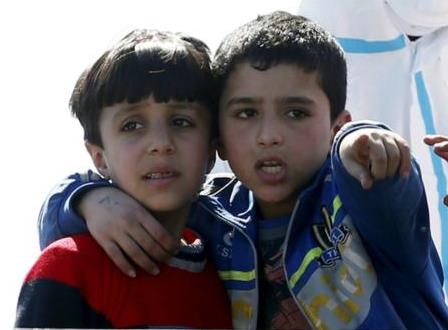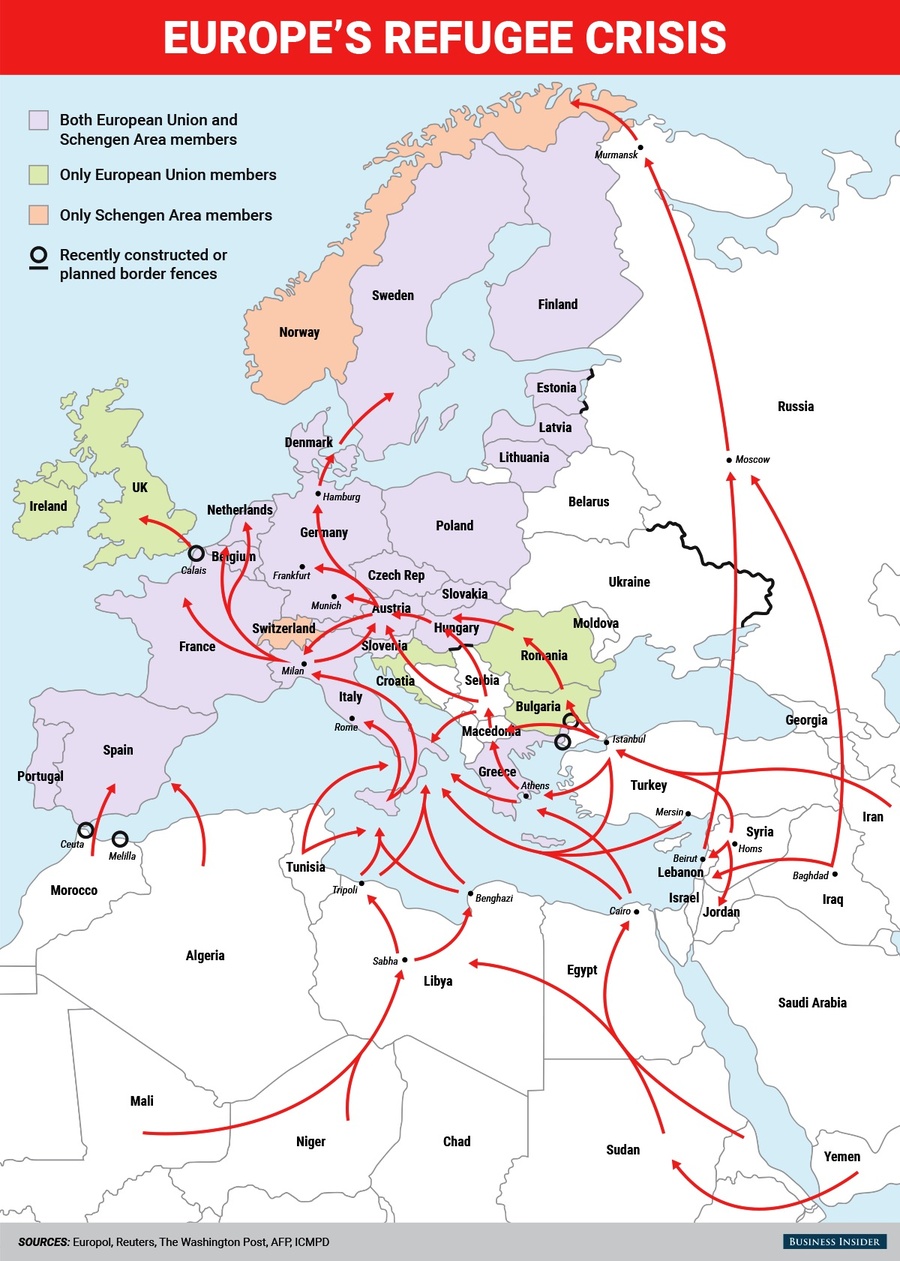Σύντομη Περιγραφή
Fatima Al-Fihri was an immigrant child. She had to migrate from Tunisia to Fez with her family, most probably due to violent conflicts in her hometown Kairouan in modern Tunisia. During this activity children learn about the fate of many other children today that are migrating from their home countries to Europe. They talk about the reasons they had to migrate, from where they came and about their hopes and dreams.
 Fig. 49 Refugee children (Credits: dainikpurbokone.net)
Fig. 49 Refugee children (Credits: dainikpurbokone.net)
Before going through the activity, read the story attached: 5.4 Fatima Al-Fihri: The woman who founded the first university of the world
Στόχοι
By studying a map, children learn about the roots of migration and the children that followed. They also find out about the reasons they had to leave their home countries. In doing so, they learn about geography and the political and climatic situations in other countries. Learning by comparing and exchange of information constitutes the main learning skills.
Μαθησιακοί Στόχοι
After this activity, the children will be able to
- name the major regions and countries refugees come from.
- summarise the main reasons for leaving their homes.
- formulate their own opinion about this issue.
Αξιολόγηση
After exchanging the experiences and view from resident and refugee children, let them summarise the countries by e.g. writing them down on a blackboard or whiteboard. Discuss with the children, which of the those countries share a common region (or continent) in the world.
Do the same with the reasons for leaving. Let the students make two lists: one for the reasons resident children come up with and one for the true reasons the migrant children provide. Discuss similarities and differences between the lists.
Ask the students (in writing or by telling) how they see the situation of refugees. What are their own experiences when the two groups interact?
Υλικό
- Map of migration routes
- Sheets of paper to draw and write the children's ideas on migration
- Colours and pencils
Θεωρητικές πληροφορίες
Over the past few decades, migration has increased dramatically worldwide. War conflicts, climate change, better access to information about distant places, relatives and friends who have migrated and the opportunities for improving living standards all have increased movements of individuals and families (UNICEF, Office of research - Innocenti). Europe has received a huge amount of children that have travelled either alone or with with their families. Today a large amount of these children have found new homes in Europe while others are still waiting in refugee camps for being allowed to continue their trip.
Πλήρης Περιγραφή της Δραστηριότητας
If you are immigrant child, try to identify your home country and the route that you took to come to Europe.
If you live already in Europe, identify on the map below where you live. Have you ever seen refugee children?
Write on a sheet of paper the reasons you can think of why children have to leave their homes.
Explain the risks that they will face while travelling to a safe country.
Describe how you feel about child migration.
 Fig. 50 Map of migration routes (Credits: dainikpurbokone.net)
Fig. 50 Map of migration routes (Credits: dainikpurbokone.net)
Πρόγραμμα σπουδών
Space Awareness curricula topics (EU and South Africa)
The journey of ideas, Migration
Συμπεράσματα
This activity connects the migration of knowledge and people during history with the modern challenge of migration to Europe. It helps fostering a mutual understanding between resident and migrant children. Preconceptions can be corrected by direct interaction with children that have experienced migration and its consequences by themselves. Still, each child can express their own view on this topic.


